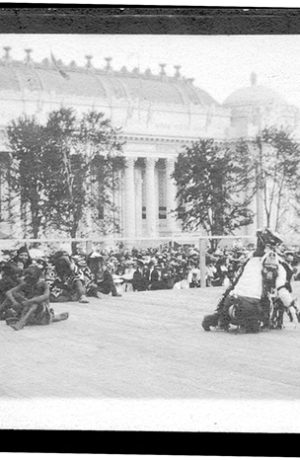By Bruce G. Miller
BC Studies no. 145 Spring 2005 pp. 135-7
By Tina Block
BC Studies no. 145 Spring 2005 pp. 31-54
Situating Vancouver Island in the British World, 1846-49
By Jeremy Mouat
BC Studies no. 145 Spring 2005 pp. 5-30
By Dan Savard
BC Studies no. 145 Spring 2005 pp. 55-96
Unsettling the City, Reordering the City: A Review Essay”
By Tom Hutton
BC Studies no. 145 Spring 2005 pp. 97-101
A Review of Storyeum in Vancouver’s Historic/Touristic of Gastown
By Meg Stanley
BC Studies no. 145 Spring 2005 pp. 103-6
L.D.: Mayor Louis Taylor and the Rise of Vancouver
By Robert McDonald
BC Studies no. 145 Spring 2005 pp. 128-30
Negotiated Memory: Doukhobor Autobiographical Discourse
By Myler Wilkinson
BC Studies no. 145 Spring 2005 pp. 132-4
Still Ranting: More Rants, Raves and Recollections
By Robert A. Campbell
BC Studies no. 145 Spring 2005 pp. 130-2
The Nature of Gold: An Environmental History of the Klondike Gold Rush
By William Morrison
BC Studies no. 145 Spring 2005 pp. 126-8
Wires in the Wilderness: The Story of the Yukon Telegraph
By Georgiana Ball
BC Studies no. 145 Spring 2005 pp. 124-6
Oregon’s Promise: An Interpretive History
By Roderick Barman
BC Studies no. 145 Spring 2005 pp. 122-4
Framing the West: Race, Gender, and the Photographic Frontier in the Pacific Northwest
By Kim Greenwell
BC Studies no. 145 Spring 2005 pp. 118-20
BC Studies no. 145 Spring 2005 pp. 117-8
The Old Red Shirt: Pioneer Poets of British Columbia
By W.H. New
BC Studies no. 145 Spring 2005 pp. 113-4
The Vancouver Acheivment: Urban Planning and Design
By John Punter
BC Studies no. 145 Spring 2005 pp. 97-101
Dan Savard is the Senior Collections Manager, Audio-visual, with the Anthropology Section, Royal British Columbia Museum where he has worked since 1973. Amongst other duties, he manages a collection of 30,000 photographs dating From the 1860s – 1990s that record the life-ways of First Nations in British Columbia, Northwestern Washington State, and Southeastern Alaska. He has participated in workshops and symposiums on visual resources collections and has given many illustrated presentations on various topics related to First Peoples of the Pacific Northwest Coast and photography. His most recent paper entitled “To do a moving picture thing…”, Cine film and the Northwest Coast 1910 – 1930, was presented at the Association of Moving Image Archivists Conference in 2003.
Jeremy Mouat teaches history at Athabasca University. His research interests include the comparative history of British colonies and colonization in the Pacific, and resource development (notably mining) in the nineteenth and early twentieth centuries. His most recent articles appeared in theJournal of Latin American Studies and the South African Historical Journal.
Tina Block is a doctoral candidate in the Department of History at the University of Victoria. Her research interests centre on the history of gender, religion, and irreligion in the North American west. She is currently completing her dissertation on the social and cultural dimensions of secularism in the postwar Pacific Northwest.
-
About
-
Issues
-
Submissions
-
Resources
-
News & Events
-
Shop


